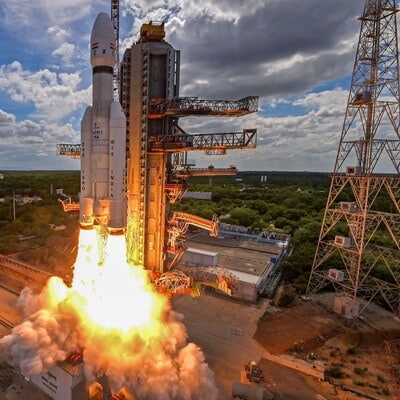[ad_1]
The Union Cabinet on Wednesday cleared two key space missions: yet another mission to the Moon, called Chandrayaan-4, and a mission to Venus by March 2028 to study and explore the planet.
Chandrayaan-4 will develop and demonstrate the technologies to return to Earth after successfully landing on the Moon and will also collect lunar samples and analyse them on Earth. On the other hand, the Venus Orbiter Mission (VOM) will be a significant step towards the government’s vision of exploring and studying Venus, beyond the Moon and Mars.
The total fund requirement for the technology demonstration mission “Chandrayaan-4” is Rs 2,104.06 crore. The cost includes spacecraft development and realisation, two launch vehicle missions of LVM3, external deep space network support, and conducting special tests for design validation, finally leading to the mission of landing on the lunar surface and a safe return to Earth with the collected lunar samples.
The total fund approved for the “Venus Orbiter Mission” (VOM) is Rs 1,236 crore, of which Rs 824 crore will be spent on the spacecraft. The cost includes the development and realisation of the spacecraft, including its specific payloads and technology elements, global ground station support for navigation and network, as well as the cost of the launch vehicle.
The Chandrayaan-4 mission will achieve the foundational technological capabilities for an Indian landing on the Moon (planned by 2040) and return safely to Earth. Major technologies required for docking/undocking, landing, safe return to Earth, as well as lunar sample collection and analysis, will be demonstrated. The mission is expected to be completed within 36 months of approval with the participation of industry and academia.
Venus, the closest planet to Earth and believed to have formed under conditions similar to Earth’s, offers a unique opportunity to understand how planetary environments can evolve very differently. The Venus Orbiter Mission, to be accomplished by the Department of Space, is envisaged to orbit a scientific spacecraft around Venus for a better understanding of the planet’s surface and subsurface, atmospheric processes, and the influence of the Sun on the Venusian atmosphere. Studying the underlying causes of the transformation of Venus, which is believed to have once been habitable and similar to Earth, will provide invaluable insights into the evolution of both Venus and Earth.
Isro will be responsible for the development of the spacecraft and its launch. The project will be effectively managed and monitored through the established practices prevailing at Isro. The data generated from the mission will be disseminated to the scientific community through existing mechanisms.
The Indian Venus mission is expected to answer several outstanding scientific questions and result in various scientific outcomes. The realisation of the spacecraft and launch vehicle will involve various industries, and it is envisaged that there will be significant employment potential and technological spin-offs to other sectors of the economy.
The Government of India has outlined an expanded vision for the Indian space programme during the Amrit Kaal, which envisages an Indian Space Station (Bharatiya Antariksh Station) by 2035 and an Indian landing on the Moon by 2040. To realise this vision, a series of Gaganyaan and Chandrayaan follow-on missions are planned, including the development of associated space transportation and infrastructure capabilities. The successful demonstration of the safe and soft landing of the Chandrayaan-3 lander on the lunar surface has established vital technologies and demonstrated capabilities possessed by only a few other nations. A natural successor to the successful landing mission is the demonstration of the ability to collect lunar samples and return them safely to Earth.
The Moon mission project will be effectively managed and monitored through the established practices prevailing at Isro. All critical technologies are envisaged to be indigenously developed. The realisation of the mission will involve various industries, and it is expected that there will be high employment potential and technological spin-offs to other sectors of the economy.
The mission will enable India to be self-sufficient in critical foundational technologies for manned missions, lunar sample returns, and the scientific analysis of lunar samples. Towards this realisation, there will be significant involvement of Indian industry. Plans for associating Indian academia through Chandrayaan-4 science meets and workshops are already in place. This mission will also ensure the establishment of facilities for the curation and analysis of the returned samples, which will be national assets.
First Published: Sep 18 2024 | 3:57 PM IS
[ad_2]
Source link

